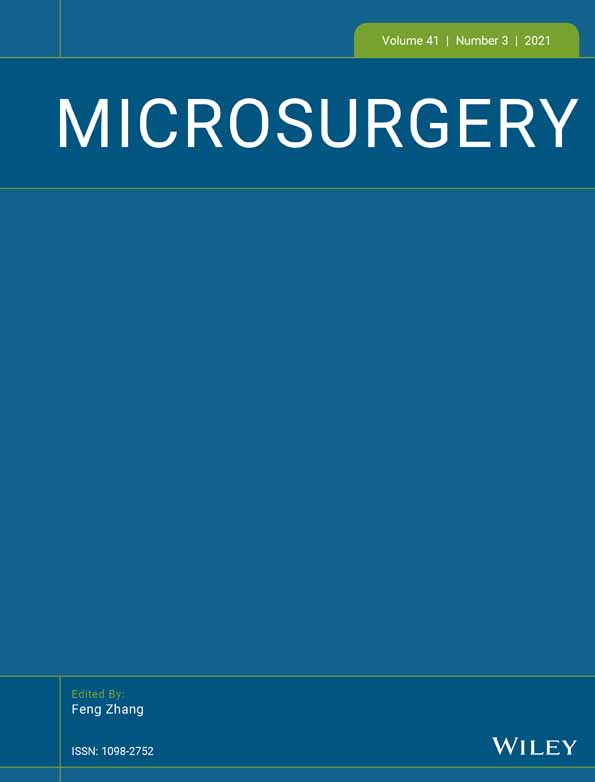Use of soleus musculocutaneous perforator-based propeller flap for lower extremity wound coverage after osteocutaneous fibula free flap harvest
Abstract
Background
Osteocutaneous fibula free flap (OCFFF) donor sites are often covered with skin grafts, with an additional donor site, more postoperative care, and increased cost. The authors examine posterior tibial artery (PTA) based pedicled propeller flaps (PPF) as an alternative for OCFFF donor site coverage.
Patients and methods
Retrospective review of 16 consecutive patients from 30 to 79 years old, who underwent OCFFF reconstruction of head and neck defects (11 mandibular, 5 maxillary), with the closure of donor site with PPF based on a perforator from PTA. Mean donor site defect measured 12.9 × 5.1 cm, PPF was an elliptical design, and rotated 180 degrees in a propeller fashion, to cover donor site defect. Visual analog scale (VAS) was used to assess esthetic results, functional outcomes assessed using mobility and range of motion (ROM), and secondary complications including infections, hematomas, and seromas were recorded. Follow-up period was noted in months postoperatively. Other information collected included underlying head and neck pathology.
Results
Average dimension of PPF measured 13.9 × 4.1 cm. Successful closure of donor site defects in 14 of 16 patients, with two flaps having partial necrosis, one requiring a secondary skin graft. Follow-up was 6 to 10 months, esthetic results with mean VAS 8.8 of 10, full ROM, and mobility noted. No secondary complications were observed. The most common pathology noted was squamous cell carcinoma (6 of 16 patients).
Conclusion
PPFs based on the soleus branch of the PTA represent an excellent alternative to skin grafts for the closure of OCFFF donor site defects.
CONFLICT OF INTEREST
None declared.
Open Research
DATA AVAILABILITY STATEMENT
Data sharing not applicable - no new data generatedData sharing is not applicable to this article as no new data were created or analyzed in this study.




